► Peugeot E-208 facelift driven
► More powerful 154hp motor
► Greater 258-mile driving range
Upgrade time for the Peugeot E-208. Already the bestselling electric car in Europe – although perhaps not one of the best EVs overall – this 2023 facelift sees it receive a neatly judged makeover and more powerful electric motor package, boosting driving range in the process.
But has this done enough to keep it competitive in the fast-moving compact EV segment? On first encounter we’re inclined to say not quite.
Pros: looks good, lots of kit, lots of choice
Cons: cramped inside, out-performed by many rivals
What’s new?
The facelift is rather successful, we think. There’s a new grille, still integrating body-coloured elements in a way that just avoids being garish, while the new vertical claw-pattern daytime running lights are complemented by horizontal claw-pattern taillights.
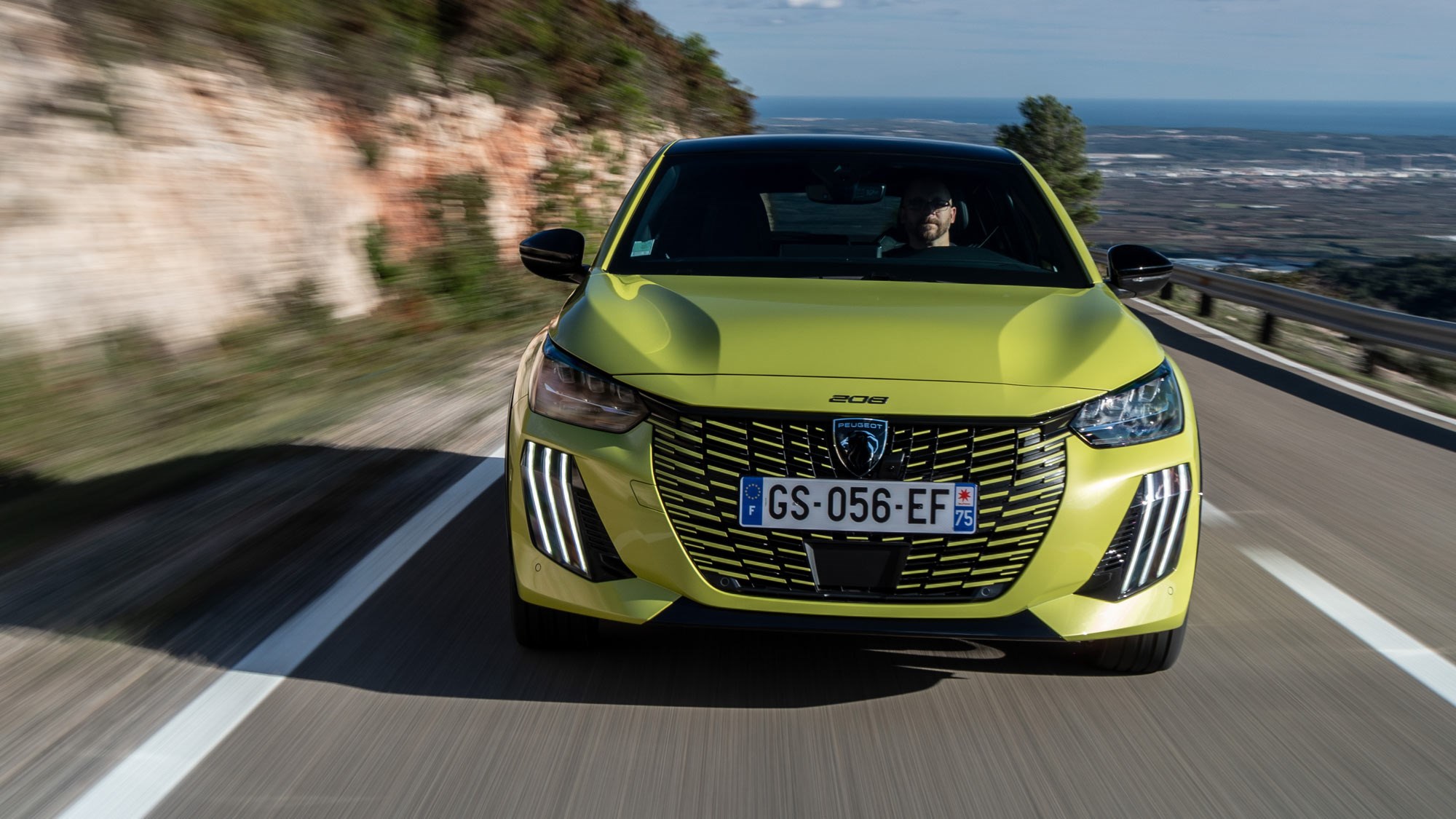
Under the bonnet, as well as the original 134bhp electric motor there’s now a 154bhp option – a useful upgrade, though still someway shy of the horses you can get from comparably priced EVs from other brands. The more powerful motor also gets a 51kWh battery pack, versus the 50kWh item fitted to the lesser version.
New 100kW DC charging capability means a charging time of 20 per cent to 80 per cent in less than 25 minutes on an appropriately rapid public charger. On a 7kW Wallbox you’ll need 7.5 hours for a full top-up.
What are the specs?
Curiously, the more powerful E-208 is quoted as fractionally slower to 62mph at 8.2sec rather than 8.1sec. They have identical 191lb ft maximum torque figures and identical kerbweights, so this can only be a calibration thing. Both have a maximum speed – in Sport mode – of 93mph.
As ever with Peugeot EVs, the choice of driving mode dictates motor performance, with only Sport getting the full figure in regular driving – though if you plant your right foot, the maximum output will still kick in, regardless of setting.
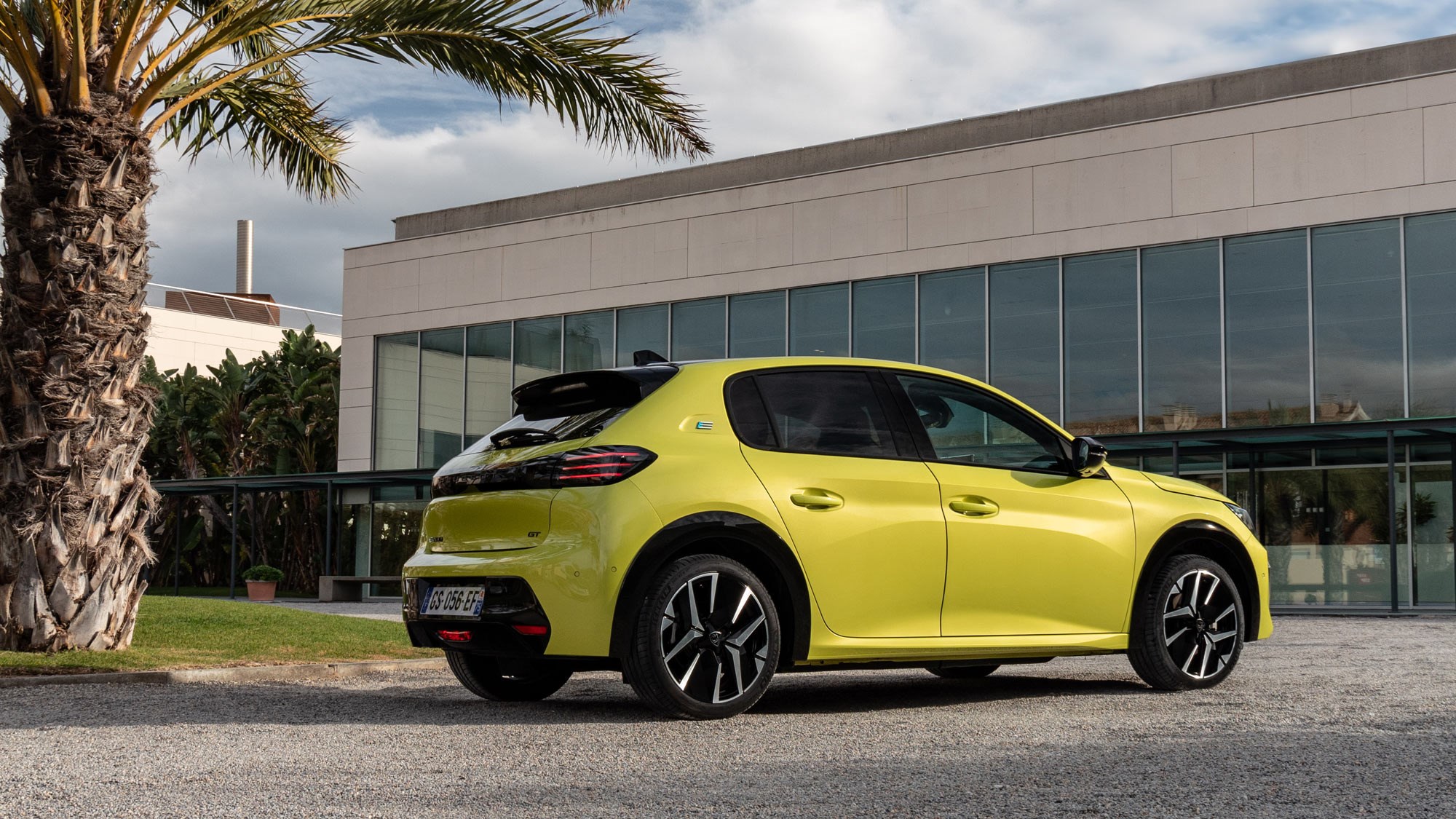
These moments aside, Normal mode restricts you to 107bhp and 162lb ft and Eco drops you down to 80bhp and 132lb ft. The latter all the better for extending the driving range as far as possible; it also limits the climate control system. Unlike driving modes in many other vehicles, you will certainly feel this difference.
However, there’s apparently more to the new motor and battery package than just performance, as the claimed WLTP driving range for this model is up to 258.5 miles per charge – that’s a useful boost over the 231.8-mile max of the lesser version, highlighting efficiency improvements beyond a mere 1kWh increase in battery capacity.
How does it drive?
On twisting roads where the surfaces are smooth – such as the mountainous areas an hour or two outside of Barcelona – you can make fast, assured progress. The steering is quick, with lighter weighting than the larger Peugeot e-308 but slightly less consistency, and if it isn’t as eager to turn in as its bigger sibling there is at least a great deal of grip. The chassis works its tyres hard, and effectively, gamely resisting understeer and eager to carry speed through tighter turns.
The power delivery is a little snappier, too, though even with the more powerful motor it’s still not as sharp as some equivalent EVs and you can sometimes sense the car holding itself back in an effort to maintain the promised direction of travel. While overtaking requires care, as you can’t simply wring out more revs as you might in a conventional combustion car, the torque makes lighter work of gradients – a decent compromise.
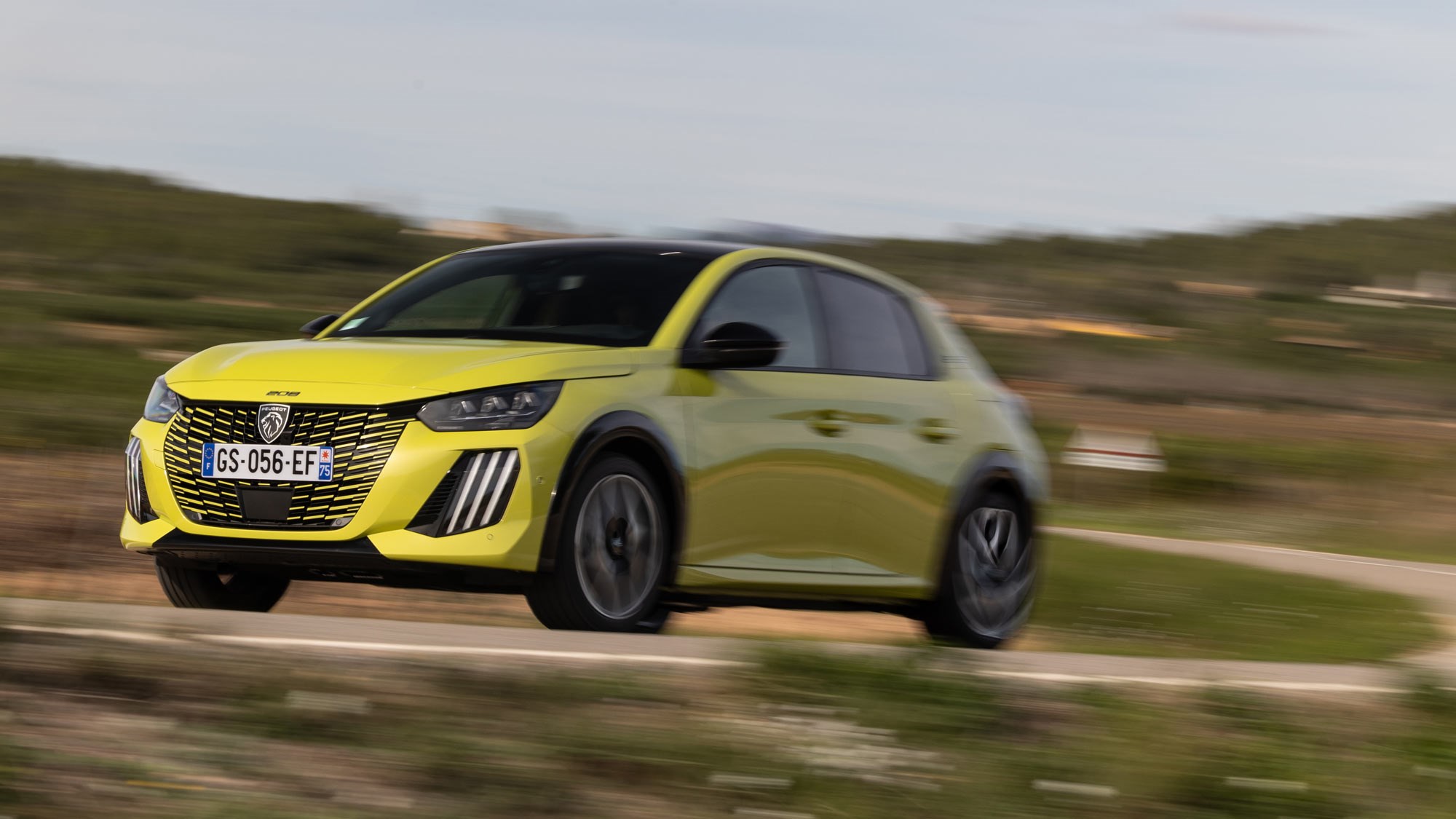
Body roll is well checked, but there is a softness to the suspension that we suspect results from Peugeot’s efforts to take some of the pain out of the short wheelbase. You’ll find your head being tossed about just a little here, and when bumps are encountered there’s a touch more aftershock than you’ll get in a bigger car.
Again, it feels like a good compromise. Safe, swift, but not quite engaging enough to be truly exciting. For a supermini without hot hatch pretensions it seems a reasonable mix, but the UK’s more variable roads may prove a bigger challenge.
What about the interior?
Good and bad. This is a compact car and it shows inside – rear legroom is dismal and larger drivers may feel like they’re wearing the E-208 more than they’re driving it. The i-Cockpit setup here really does place the steering wheel right in your lap if you want to stand any chance of seeing the digital instrument cluster.
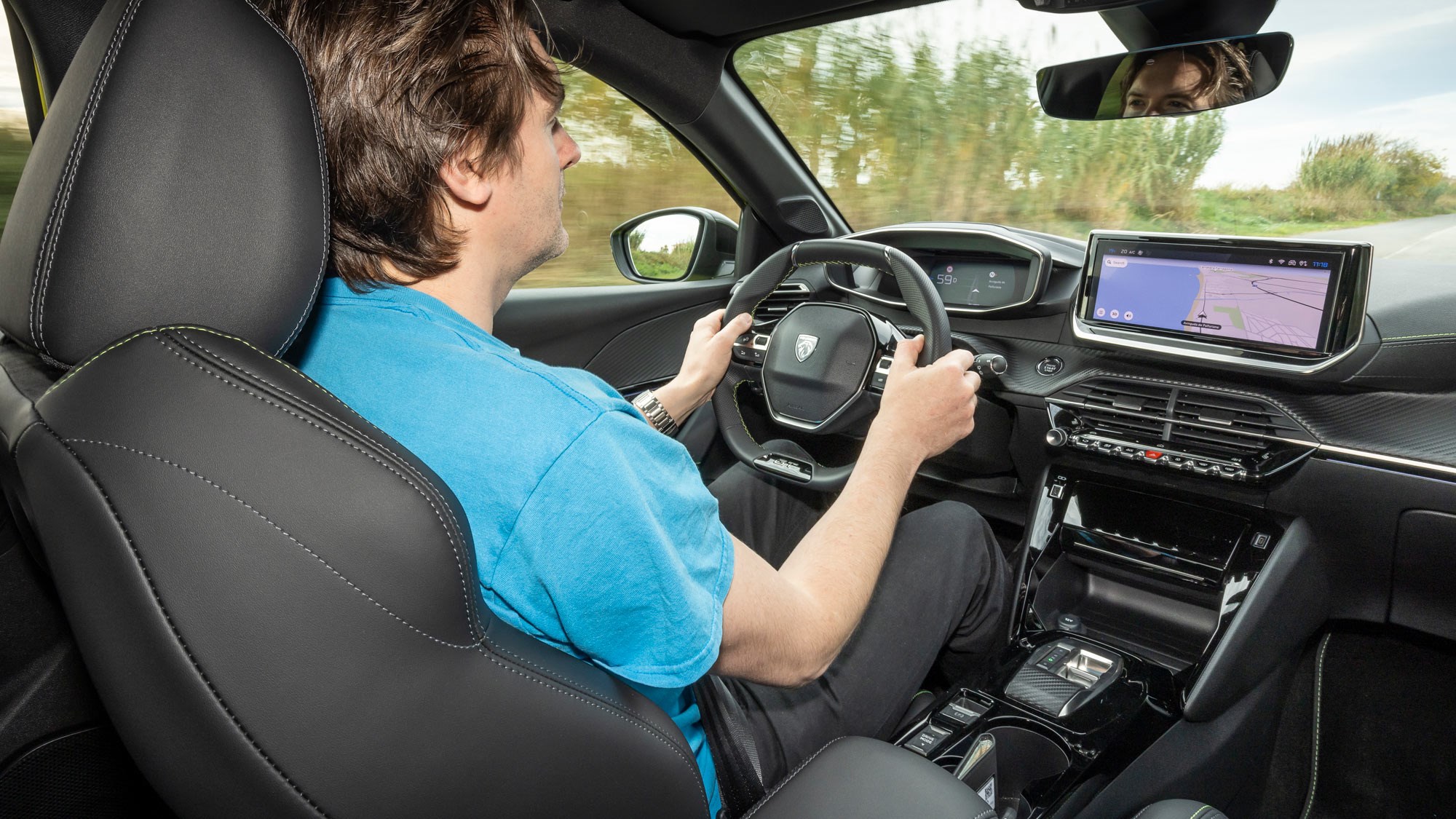
On quiet roads we went for maximum wheel height and ignorant bliss about the indicated speed, but that’s another way of not being comfortable for many people. The idea of raising the instruments to put them closer to the driver’s line of sight is a commendable one, but it’s a desire best resolved by a head-up display these days, which would allow for a much more universally acceptable range in the driving position.
Other evidence that ergonomics took second place to style comes from the position of the heated seat controls, but we think you’d get used to that and at least there’s a knob for the volume control. The 10.0-inch infotainment system is slick enough, and there are useful physical buttons to shortcut to the main functions, even if you still have to use the touchscreen – or voice control – to adjust the temperature.
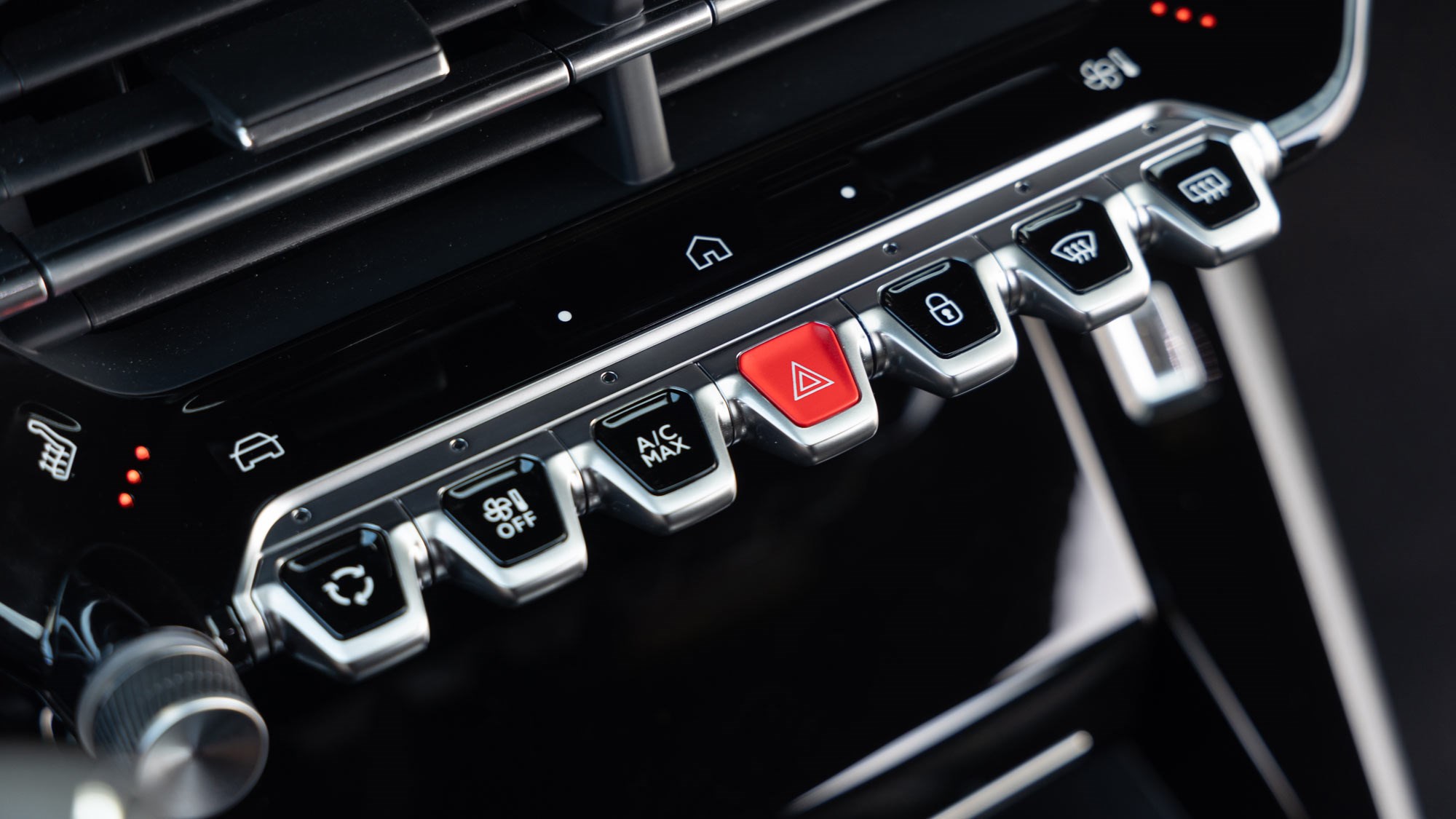
Build quality is patchy, however, with very hollow-sounding door panels and hilariously variable gaps between fittings – notably either end of the dashboard on our test car.
Before you buy (trims and rivals)
The E-208 is treated exactly as an engine variant of the regular Peugeot 208, which means you can get both motor variants in every 208 trim level. This means 16-inch steel wheels on the 134bhp Active starting at £31,200 (£32,400 for 154bhp) right through to the 17-inch alloys and distinctive exterior styling of the GT version, which tops out at £36,250 with the 154bhp motor.
Standard equipment is generous throughout, with even entry-level cars receiving LED ‘eco’ headlights, air-conditioning, rear parking sensors and wireless Apple CarPlay and Android Auto. E-Style adds 16-inch alloys, 7.0-inch infotainment with sat-nav, the grille with the body-coloured elements and an acoustic windscreen for improved refinement, amongst many other items. A worthy upgrade.
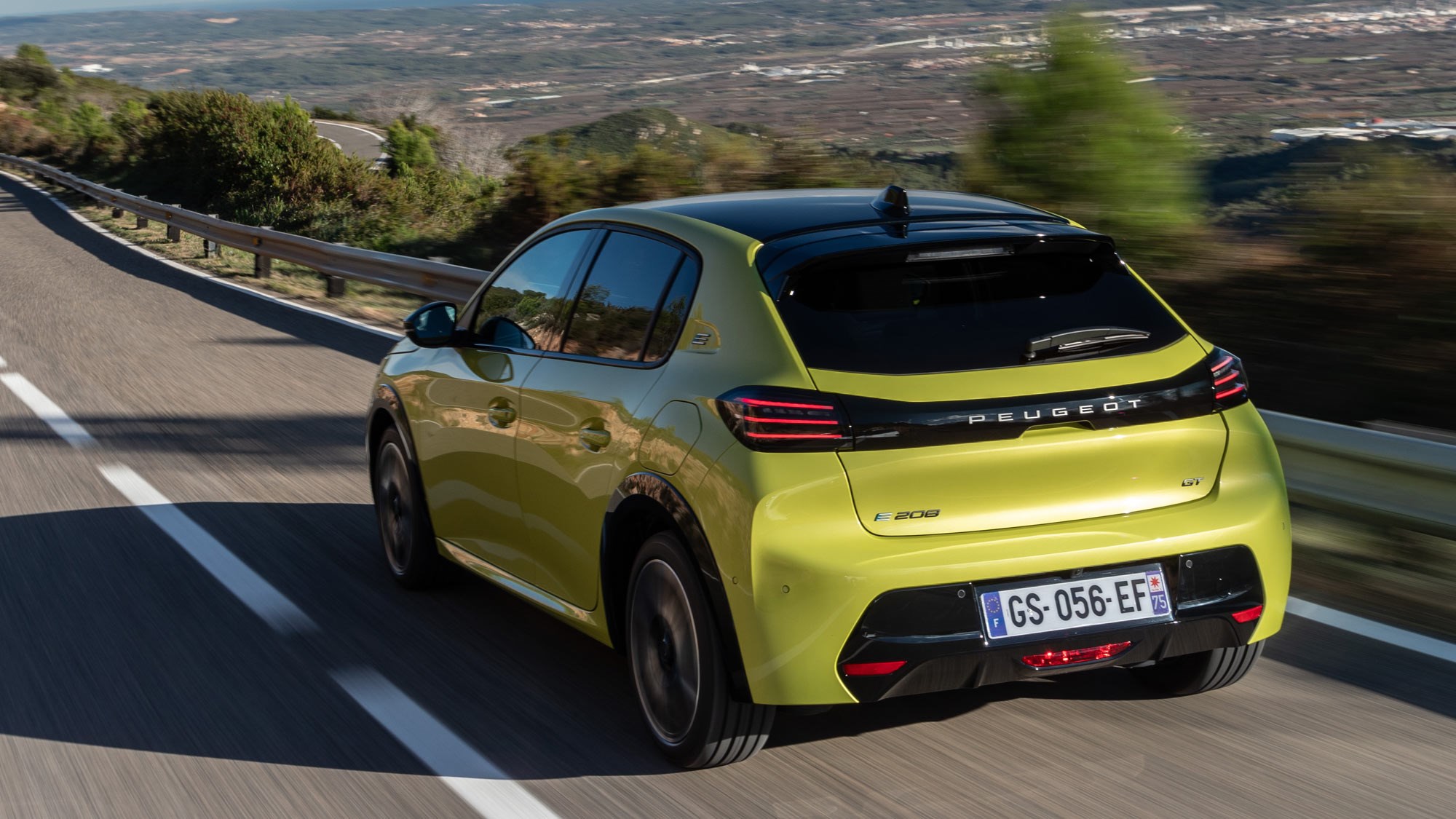
Allure highlights include a 10.0-inch infotainment system, 10.0-inch digital dials and front parking sensors, while GT adds a reversing camera, keyless go, wireless phone charging, full LED headlights and some extra safety kit. As well as a number of GT styling features.
Where the E-208 starts to stumble is when you compare the cost to what you get from rivals. An entry-level MG 4, for example, starts from £26,995 and offers more power, more range and a larger car. Prefer a premium brand? Then a Volvo EX30 is comparably priced but also offers more power and more range. And for just a bit more than a top-spec E-208 GT you could buy a Tesla Model 3…
Verdict
The Peugeot E-208 is a likeable and attractive car but it feels a little out of time. The newer motor adds only a small amount of sparkle to the performance and still trails well behind rival products. The driving experience is good but not quite enthralling, while the limited interior space will surely reduce its appeal among people who have friends.
If it were about £7k cheaper we’d be more interested. But as things stand, we just can’t see it offers enough value to British buyers in one of the most competitive areas of the electric vehicle market.
Specs below are for the 154bhp / 51kWh version